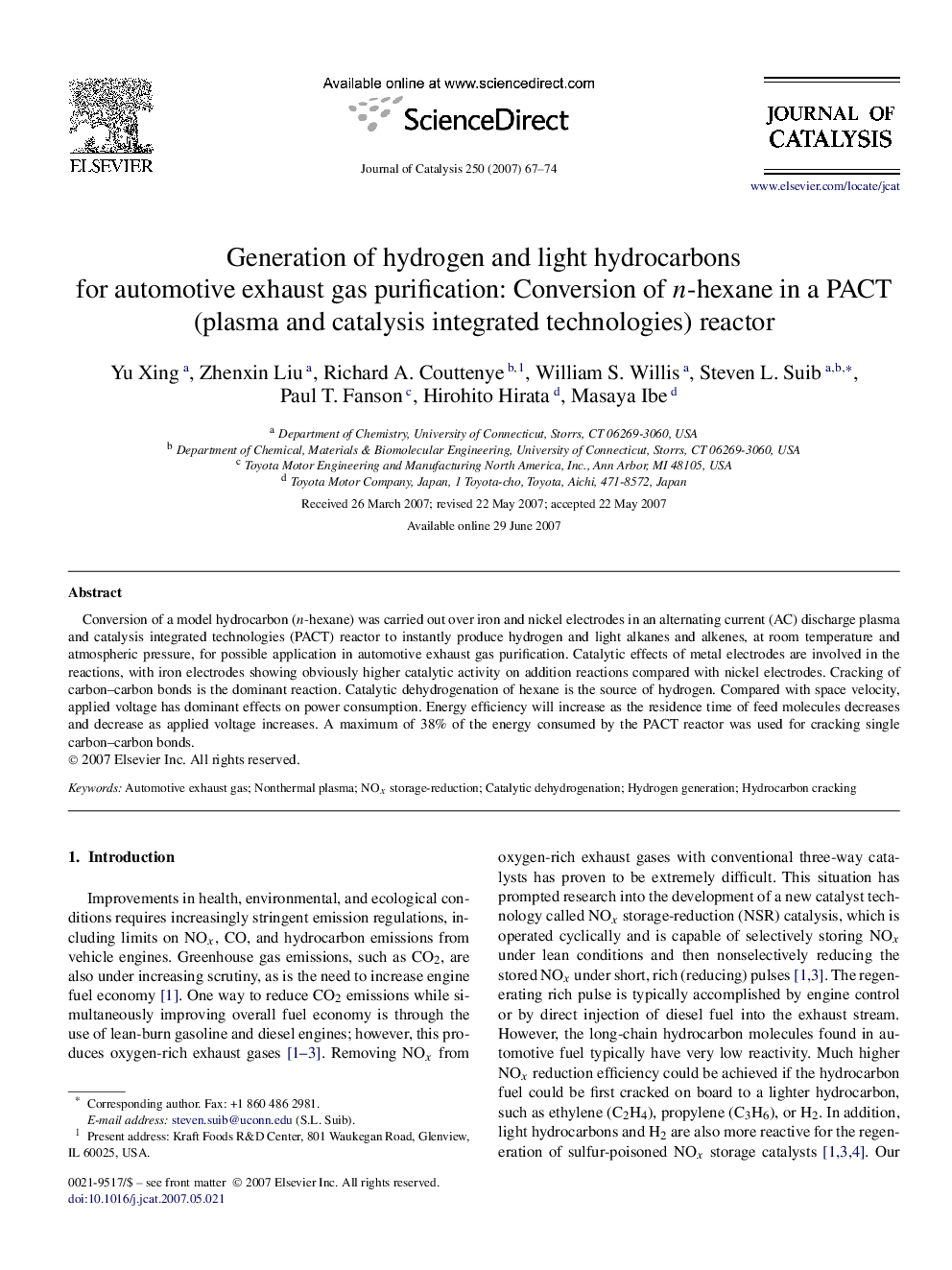| Article ID | Journal | Published Year | Pages | File Type |
|---|---|---|---|---|
| 63141 | Journal of Catalysis | 2007 | 8 Pages |
Conversion of a model hydrocarbon (n-hexane) was carried out over iron and nickel electrodes in an alternating current (AC) discharge plasma and catalysis integrated technologies (PACT) reactor to instantly produce hydrogen and light alkanes and alkenes, at room temperature and atmospheric pressure, for possible application in automotive exhaust gas purification. Catalytic effects of metal electrodes are involved in the reactions, with iron electrodes showing obviously higher catalytic activity on addition reactions compared with nickel electrodes. Cracking of carbon–carbon bonds is the dominant reaction. Catalytic dehydrogenation of hexane is the source of hydrogen. Compared with space velocity, applied voltage has dominant effects on power consumption. Energy efficiency will increase as the residence time of feed molecules decreases and decrease as applied voltage increases. A maximum of 38% of the energy consumed by the PACT reactor was used for cracking single carbon–carbon bonds.
